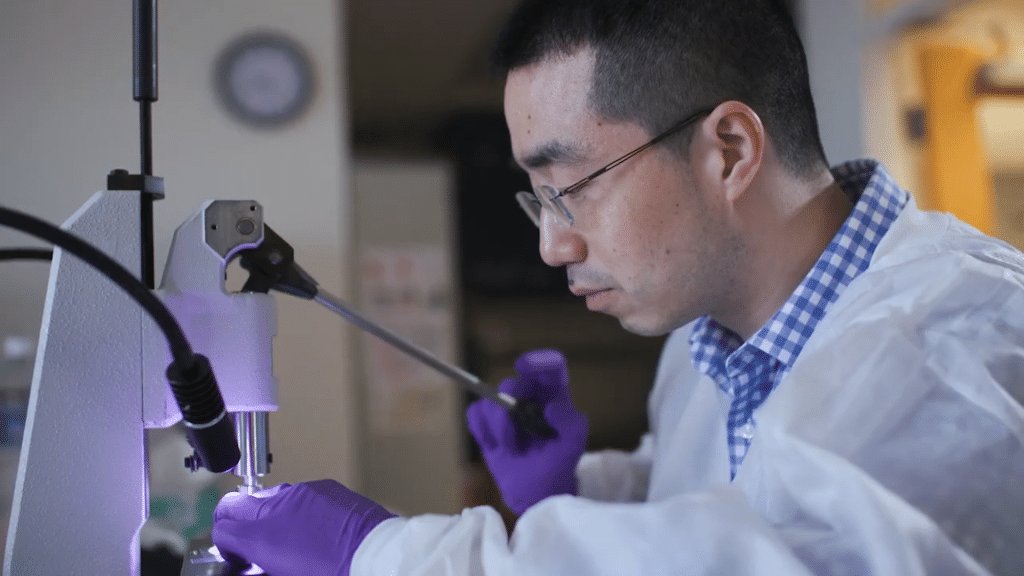Reprinted with permission from ImpactAlpha. You can link to the article on their website here.
Climate change entrepreneurs and fund managers are developing innovative solutions to worldwide challenges.
But too often, promising efforts languish on the drawing board because they lack access to the suitable capital they need to demonstrate their effectiveness.
To amplify and speed renewable energy financing, investors across a broad spectrum must step up in new and powerful ways. By harnessing the collective resources of funders, foundations can fill capital gaps and help move the needle in the climate fight beyond what any one foundation could do alone.
That is why our foundations are working to form new global coalitions of philanthropic investors focused on high leverage issues like sustainable land use. The goal is to demonstrate the viability of such initiatives and enable investors of all sizes and capacities to participate for maximum impact.
The value of these investment strategies are clear in three critical areas that benefit from philanthropic capital that can be flexible and risk-tolerant: renewable energy, energy efficiency in the built environment, and sustainable forestry and land use.
Scale and urgency
We believe stepping up on climate change is an imperative, especially for the philanthropic community. The amount of carbon dioxide in the atmosphere is higher than at any time in the last 800,000 years, and the Earth’s average temperature is increasing at an alarming and incontrovertible rate.
Our foundations—the David and Lucile Packard Foundation and the John D. and Catherine T. MacArthur Foundation—have significant grantmaking programs to support climate solutions.
But given the scale and urgency of climate challenges, that is not enough. So, we are also using mission investments (also known as impact investments) to accelerate climate solutions and take them to commercial scale. We strongly urge other philanthropic investors to join us in this work.
For example, the Packard Foundation made early, low-interest loans of $6.5 million to help SunFunder prove its model, build a track record to attract larger public and private investments, and grow into a leading clean energy lending intermediary. Our early investment, combined with capital from a coalition of impact investors, is expanding the deployment of solar energy systems in developing countries around the world.
In another example, a coalition of grantmakers—the MacArthur, Hewlett, Good Energies, and Packard foundations, along with the Grantham Environmental Trust—is working to accelerate deployment of rooftop and off-grid solar in India, collaborating with the Overseas Private Investment Corporation and the government of India in this effort.
The first of these interventions, the U.S.-India Clean Energy Finance facility, is providing up to $20 million of grant capital to jumpstart and build an investable pipeline of renewable energy companies and projects. This effort will be followed by a series of investments under current development.
Energy efficiency models can likewise benefit from this kind of catalytic financing, like the $26 million in MacArthur Foundation impact investments focused on innovative financing mechanisms for multifamily affordable housing. This transformational program helped establish the country’s largest multifamily energy efficiency program, the Energy Savers Loan Fund, and fueled financial innovations to help property owners invest in more efficient systems. The program will leverage enough capital to cut greenhouse gas emissions by up to 500,000 metric tons, not only reducing carbon footprints but also making homes more affordable for low-income residents.
Climate-smart land use initiatives, especially reforestation, are a third strategy to both mitigate against and absorb carbon from the atmosphere. Over the past seven years, the Packard Foundation has made $27 million in mission investments to grow promising sustainable land use fund managers like Ecotrust Forest Management, The Climate Trust, and Althelia– which are demonstrating that climate-smart land use makes both environmental and business sense.
In the case of EcoTrust Forest Management, building on earlier MacArthur Foundation work, the Packard Foundation invested in three successive funds alongside a range of impact investors to demonstrate that science-based sustainable forestry can simultaneously create significant carbon benefits, improve the long-term health of forests and wildlife habitats, and produce attractive investor returns.
It is easy to see the common threads running through these efforts:
- They are collaborative, with foundations and other investors coming together, often building on the earlier efforts of colleagues;
- The financing is tailored to the unique needs of the sector, offering products that commercial investors are generally not able to provide; and
- The objectives are focused on impact, helping nurture opportunities that eventually attract mainstream investors.
The methods are proven, and can play a vital role in advancing climate solutions. We now need to move these collaborations to a larger scale.
If we are going to keep the planet from warming more than 1.5 degrees Celsius above pre-industrial levels, we can only afford to emit about another 600 Gigatons of CO2 into the atmosphere. At current rates, that will take about 14 years (or perhaps a decade longer if we aim for 2 degrees). In either scenario, urgent action is needed.
Now, more than ever, philanthropy has to step up and go big. The health of our children, our communities, and our economic future literally depends on it.
Susan Phinney Silver is the Mission Investing Director at the David and Lucile Packard Foundation, where she oversees the Foundation’s $180 million mission investing program.
Debra Schwartz is the Managing Director of Impact Investments for the John D. and Catherine T. MacArthur Foundation, which has allocated up to $500 million for impact investments.








